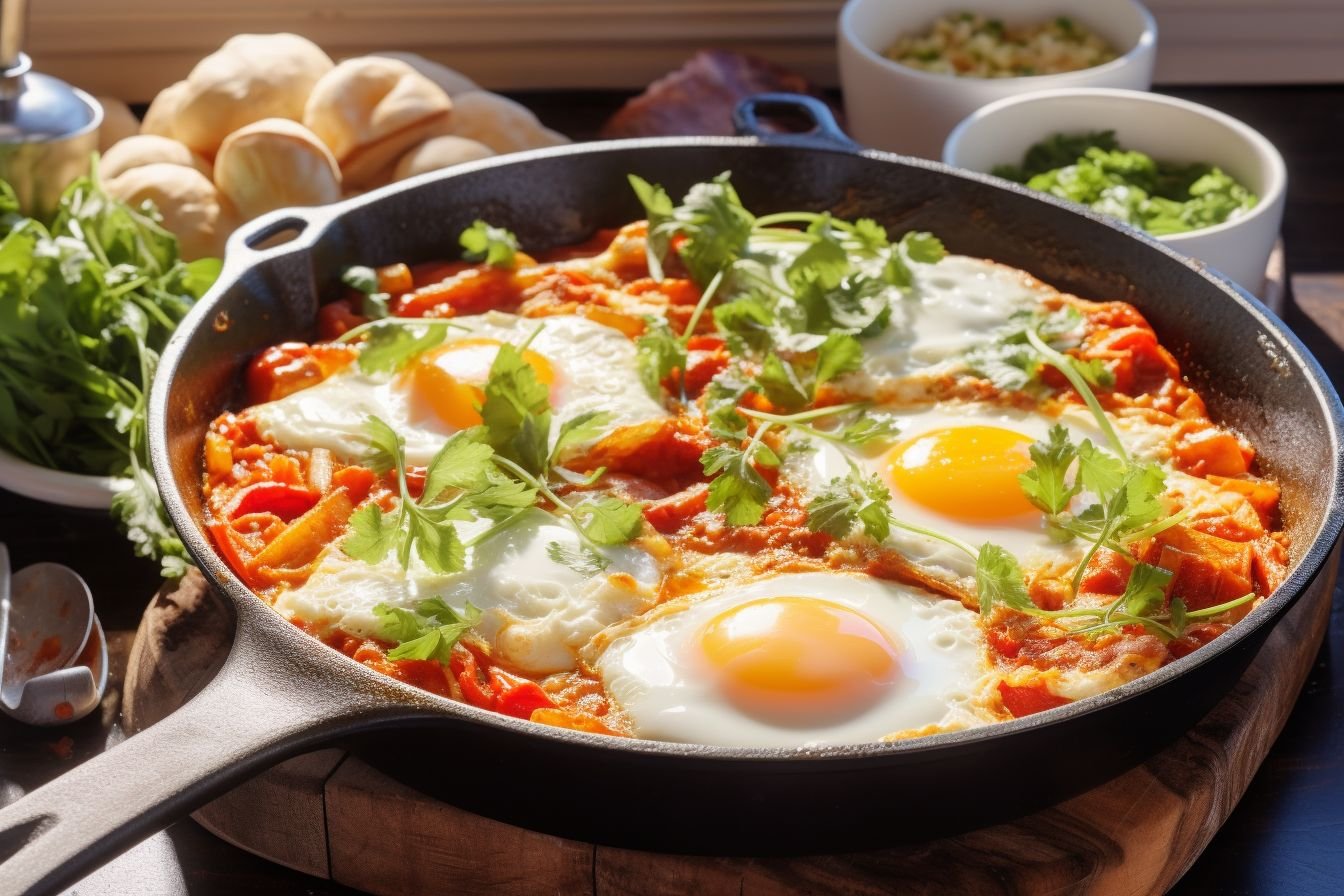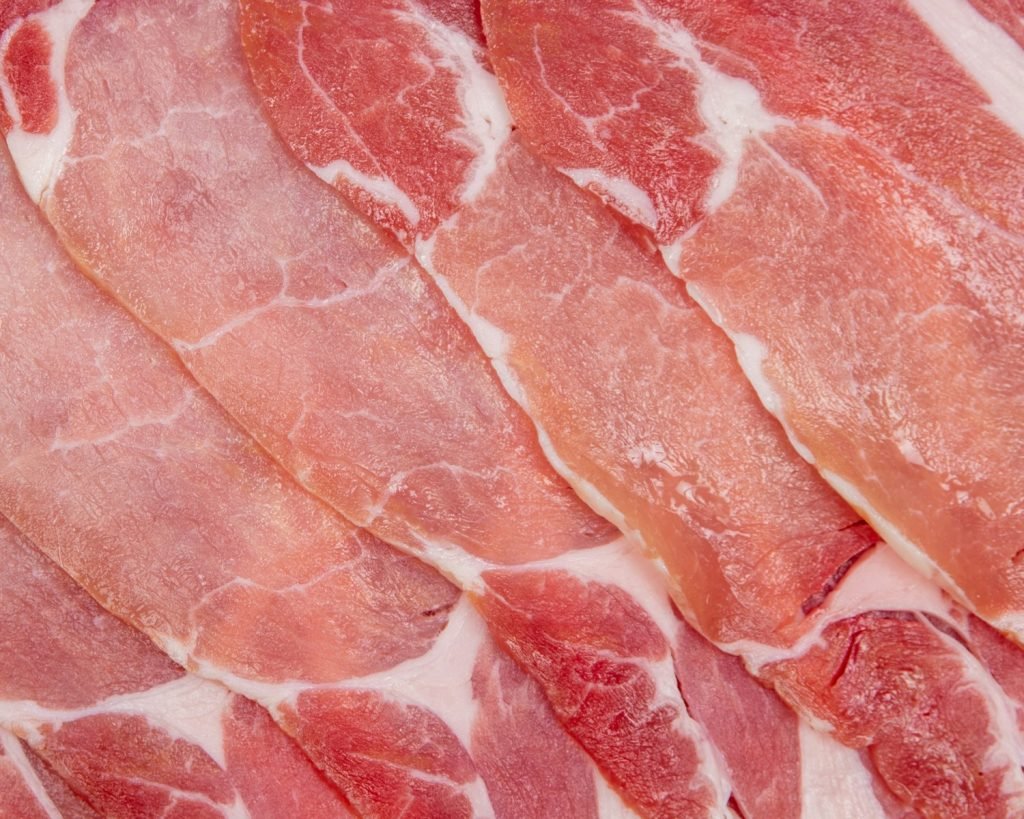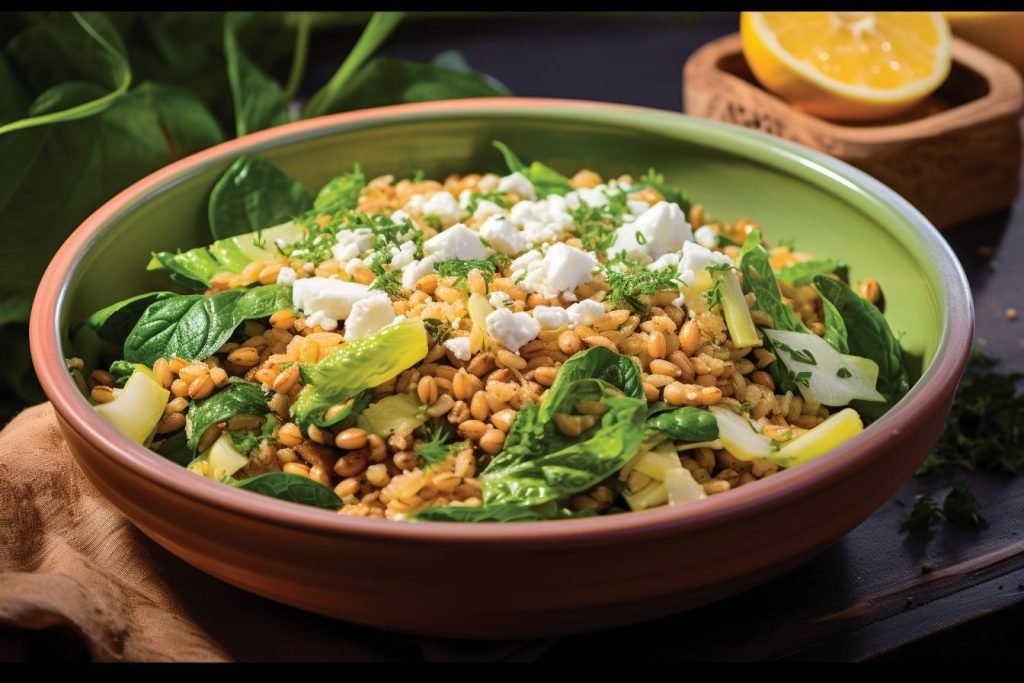Shakshuka with bacon is a delicious combination of eggs, bacon, and a spicy tomato sauce that’s perfect for starting your day off right. This recipe is easy to make and requires only a few ingredients you probably already have in your kitchen.
To make this dish, you’ll need extra virgin olive oil, smoked British thick-back bacon, yellow onion, red bell pepper, paprika, cumin, black pepper, Himalayan salt, bone broth (or water), crushed tomatoes, eggs, and fresh basil. The bacon adds a smoky flavor to the dish that pairs perfectly with the spicy tomato sauce. The eggs are cooked right in the sauce, making them perfectly runny and delicious.
If you’re looking for a new breakfast recipe try this one. It’s a hearty and satisfying meal that’s perfect for a lazy weekend morning or a quick weekday breakfast. Plus, it’s easy to make and can be customized to your liking with different spices and toppings.
What Is Shakshuka?
Historical Background
Shakshuka has a long and interesting history. It is believed to have originated in North Africa, specifically in Tunisia, and was later introduced to the Middle East. The dish was traditionally prepared by cooking eggs in a spicy tomato sauce with onions and peppers. Over time, variations of the dish emerged, with some adding meat, cheese, or other vegetables.
Cultural Significance
Shakshuka has become a staple in many households and restaurants in the Middle East and North Africa. In Israel, it is a popular breakfast dish and is often served with bread or pita. The dish has also gained popularity in other parts of the world, including Europe and North America.
Shakshuka is not only a delicious dish but also a cultural symbol. It represents the diverse culinary traditions of the Middle East and North Africa and is a testament to the region’s rich history and culture.
Ingredients:
- 1 tablespoon of extra virgin olive oil
- 450 grams of chopped Waitrose smoked British thick back
- 100 grams of chopped yellow onion
- 100 grams of chopped red bell pepper
- 1 tablespoon of paprika
- 1 teaspoon of ground cumin
- 1/2 teaspoon of black pepper
- 1 teaspoon of Himalayan salt
- 1/4 cup of water
- 1 can (16oz) of crushed tomatoes
- 8 large eggs
- 1 tablespoon of chopped fresh basil
How to Make Shakshuka with Bacon?
- To start, cook the bacon in a little oil in a large cast iron skillet for about 2 minutes over medium heat. Once the bacon is cooked, Throw the onion and red pepper into the pan and cook them together.
- Next, Mix in all the spices and stir in the water. Cover the skillet and let it simmer for 6-8 minutes. After that, mix in the crushed tomatoes and heat them through.
- Now, it’s time to create the wells for the eggs. Gently crack the eggs into the wells and then cover the skillet. Cook it on medium heat for 6-8 minutes until the eggs are done how you like them.
- Finally, take the skillet off the heat and sprinkle the chopped fresh basil on top. The shakshuka is now ready to be served immediately.
Nutritional Information
Caloric Content
This shakshuka is a delicious and filling meal that is also relatively low in calories. One serving of this dish contains approximately 350-400 calories, depending on the size of the serving and the amount of bacon used. This makes it a great option for those who are trying to maintain a healthy weight or lose weight.
Macronutrients and Micronutrients
This is also a good source of several important macronutrients and micronutrients. One serving of this dish contains around 20-25 grams of protein, which is important for muscle growth and repair. It also contains a variety of vitamins and minerals, including vitamin A, vitamin C, potassium, and iron.
However, it is worth noting that this shakshuka is also relatively high in saturated fat and cholesterol. One serving of this dish contains around 4 grams of saturated fat and 400-450 milligrams of cholesterol. While these nutrients are important in moderation, it is recommended that individuals limit their intake of saturated fat and cholesterol to maintain heart health.
In terms of sodium, it can be relatively high, depending on the amount of salt used in the recipe. It is recommended that individuals limit their sodium intake to around 2,300 milligrams per day to maintain optimal health.
Serving Suggestions
Accompaniments
One of my favorite pairings is crusty bread, which is perfect for dipping into the flavorful tomato sauce. Pita bread is another great option, especially if you want to keep things light and fluffy.
If you’re looking for something a little more substantial, why not try serving your shakshuka with some falafel? This Middle Eastern dish is a great way to add some extra protein to your meal, and it pairs perfectly with the rich and spicy flavors of the Shakshuka.
Cheese lovers will be happy to know that there are plenty of options for adding some extra creaminess to their shakshuka. Feta cheese is a classic choice, but you could also try goat cheese or even pepper sauce for a little extra kick.
Presentation Tips
There are a few things to keep in mind. First, make sure that you’re using a skillet or other oven-safe dish that looks good on the table.
Next, consider adding some fresh herbs like mint or parsley to the top of your shakshuka for a pop of color and freshness. If you’re serving your shakshuka as part of a mezze platter, try arranging it alongside other Middle Eastern dishes like hummus, baba ganoush, and stuffed grape leaves.
Finally, don’t forget about the power of a good garnish. A sprinkle of chili flakes or a few slices of red bell pepper can take your shakshuka from ordinary to extraordinary. And if you’re feeling fancy, why not serve it in a hollowed-out sweet potato? The possibilities are endless!
Recipe Variations
Vegetarian and Vegan Options
If you prefer a meatless shakshuka, you can easily omit the bacon and add in some alternative ingredients. One option is to replace the bacon with roasted red peppers or mushrooms for a savory and satisfying flavor. Another option is to use vegan bacon or sausage instead of traditional meat.
For a vegan option, simply leave out the eggs and add in some tofu or chickpeas for a protein boost. You can also use nutritional yeast instead of cheese for a cheesy flavor without the dairy.
Alternative Meats and Add-ins
If you’re looking to mix things up a bit, try using different types of meat or add-ins. Chorizo is a popular option for a spicy and flavorful twist on the classic recipe. You can also try using ground beef or lamb for a heartier dish.
For a North African twist, add in some harissa or chili powder for a spicy kick. For a Mediterranean flavor, try using feta cheese and olives instead of cheddar and bacon.
Canned tomatoes work great in this recipe, but if you have fresh tomatoes on hand, feel free to use those instead. You can also experiment with different types of peppers, such as poblano or jalapeno, for a different level of heat.
Preparation and Cooking Time
Estimated Prep Time
On average, it takes me about 10-15 minutes to gather all the necessary ingredients, chop the vegetables, and cook the bacon. However, this time may vary depending on your experience in the kitchen and the tools you have available.
Cooking Duration
The cooking time for shakshuka with bacon is around 25-30 minutes. During this time, the eggs will be poached in the tomato sauce, and the bacon will be crispy and flavorful.
To ensure that the shakshuka is cooked to perfection, I always closely monitor the pan and adjust the heat as necessary. I also like to use a lid to cover the pan during the last few minutes of cooking to make sure that the eggs are fully cooked on top.
Total Time
In total, preparing and cooking shakshuka with bacon takes me around 35-45 minutes. Of course, this time may vary depending on your skill level and the tools you have available. However, with a little practice and patience, anyone can make a delicious and satisfying shakshuka with bacon in no time.
Tips and Tricks
Ensuring Perfect Egg Doneness
One of the keys to a great shakshuka is getting the egg doneness just right. You want the whites to be set but the yolks to still be runny to mix with the tomato sauce and create a delicious, creamy texture.
To achieve this, make sure you’re cooking the eggs over low to medium heat. This will help prevent the bottoms from burning while the tops are still runny. You can also cover the pan with a lid for the last few minutes of cooking to help set the whites while keeping the yolks runny.
Another trick is to use a spoon to baste the eggs with the tomato sauce as they cook. This will help the eggs cook more evenly and prevent the tops from drying out.
Sauce Consistency
The consistency of the tomato sauce is another important factor in a great shakshuka. You want it to be thick enough to hold up the eggs, but not so thick that it becomes gloopy or clumpy.
To achieve the perfect consistency, start by cooking the tomato sauce down until it’s thick and bubbly. You can also add a spoonful of tomato paste to help thicken it up.
Another trick is to season the sauce with a pinch of kosher salt. This will help bring out the natural sweetness of the tomatoes and give the sauce a more complex flavor.
Conclusion
In conclusion, I must say that shakshuka with bacon is a fantastic dish that everyone should try at least once. The combination of the sweet and spicy tomato sauce, the perfectly cooked eggs, and the crispy bacon is simply irresistible.
One of the things I love about it is how easy it is to make. You can prepare the sauce ahead of time and then just crack the eggs into it and let it cook. It’s a great dish to make for breakfast, brunch, or even dinner.
Another great thing about this shakshuka is how versatile it is. You can add different vegetables to the sauce, such as bell peppers, onions, or mushrooms, to give it a different flavor. You can also experiment with different spices to make it more or less spicy.
Overall, I highly recommend trying shakshuka with bacon if you haven’t already. It’s a delicious and easy-to-make dish that is sure to impress your friends and family.
By the way, couscous and spinach salad is a great pairing!
Get its recipe now (by clicking the image below):






